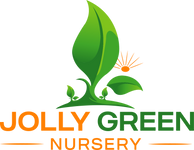
Buttonsage
Original price
$8.50
-
Original price
$8.50
Original price
$8.50
$8.50
-
$8.50
Current price
$8.50
Buttonsage Overview
-
Best Growing Environment
-
Buttonsage thrives in warm, coastal, or tropical environments with well-drained, sandy, or rocky soils, ideally with a slightly acidic to neutral pH (6.0-7.0).
-
It prefers frost-free climates or areas with minimal cold exposure, making it a natural fit for southern U.S. regions, especially near coastlines where salt tolerance is beneficial.
-
This plant excels in xeriscapes or low-maintenance gardens, tolerating heat, drought, and poor soil conditions once established.
-
-
Botanical Name
-
The botanical name for Buttonsage is Lantana involucrata, a species within the Verbenaceae (verbena) family, distinct from more common lantana varieties like Lantana camara.
-
-
Common Names
-
Known as Buttonsage, it’s also called Wild Sage, White Sage, Coastal Lantana, or Sage Lantana, reflecting its aromatic leaves and regional prevalence.
-
-
Average Height
-
Buttonsage typically grows to an average height of 2 to 5 feet, though it can reach up to 6 feet in optimal conditions with minimal pruning.
-
Its width often matches or exceeds its height, forming a rounded, bushy shrub ideal for hedges or ground cover.
-
-
Growth Rate
-
This plant has a moderate growth rate, adding about 12 to 24 inches per year under favorable conditions, slowing in cooler or drier periods.
-
It establishes quickly in warm climates, often reaching maturity within 2 to 3 years when planted from cuttings or nursery stock.
-
-
Sun Requirements
-
Buttonsage requires full sun, needing at least 6 to 8 hours of direct sunlight daily to promote healthy growth and abundant flowering.
-
It can tolerate partial shade, but reduced light may lead to leggy growth and fewer blooms.
-
-
Cold Hardiness
-
It is hardy in USDA Zones 8b to 11, tolerating brief dips to around 15°F (-9°C), though prolonged freezes can damage or kill the plant.
-
In colder zones (e.g., 8b), it may die back in winter but can regrow from the roots if well-mulched and protected.
-
-
Water Requirements
-
Buttonsage is drought-tolerant once established, requiring minimal watering—about 1 inch per week during the first year, then only during extended dry spells.
-
Young plants need consistent moisture (water when the top 1-2 inches of soil dry out) to establish roots, but overwatering can lead to root rot.
-
-
Planting Guide
-
Plant in spring or early summer in a sunny, well-drained spot; dig a hole twice the width of the root ball and as deep, mixing soil with compost for nutrient boost.
-
Space plants 3 to 5 feet apart to allow for spreading, and mulch with a 2- to 3-inch layer of organic material (e.g., bark) to retain moisture and suppress weeds, keeping it 2 inches from the stem.
-
Ensure good air circulation by avoiding overcrowded planting, which helps prevent fungal issues in humid climates.
-
-
Fertilizing Times and Recommended Fertilizer
-
Fertilize three times annually: early spring (March), early summer (June), and late summer (August), using a balanced, slow-release fertilizer like 10-10-10 or 8-8-8 at a rate of 1 tablespoon per square foot, spread around the drip line.
-
Avoid fertilizing after August to prevent tender new growth that could be damaged by unexpected cold snaps; water thoroughly after application to aid absorption.
-
For organic options, apply compost or well-rotted manure in spring to enhance soil fertility naturally.
-
-
USDA Zone
-
Buttonsage is best suited to USDA Hardiness Zones 8b to 11, thriving in warm climates like the southeastern U.S., coastal California, and parts of Texas and Florida where winters remain mild.
-

